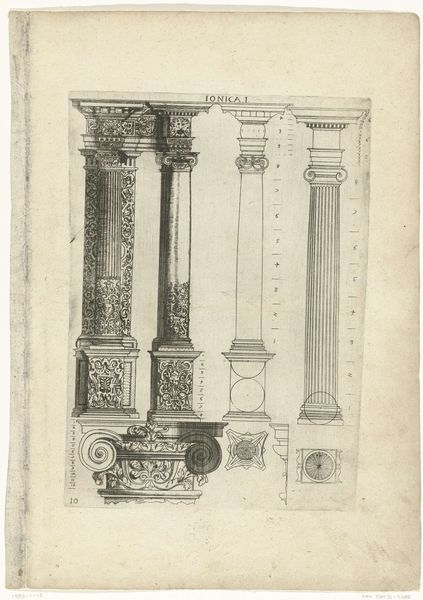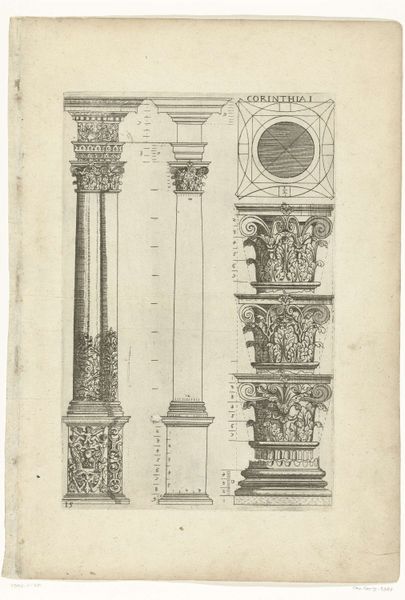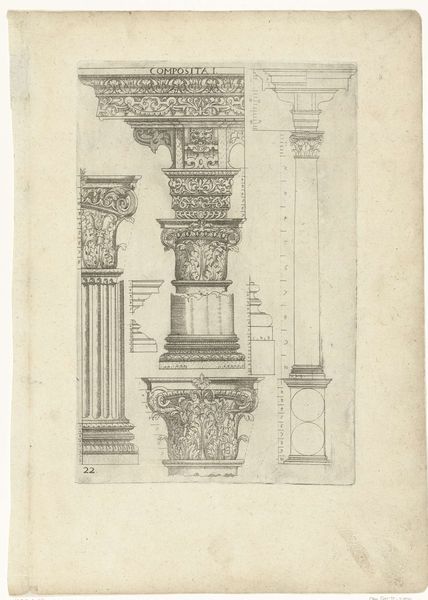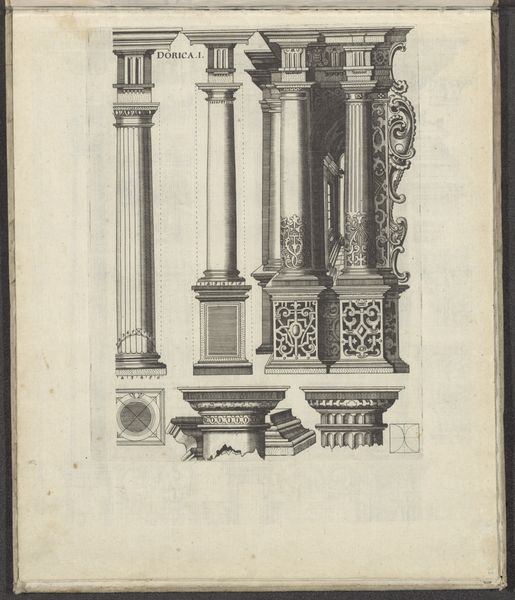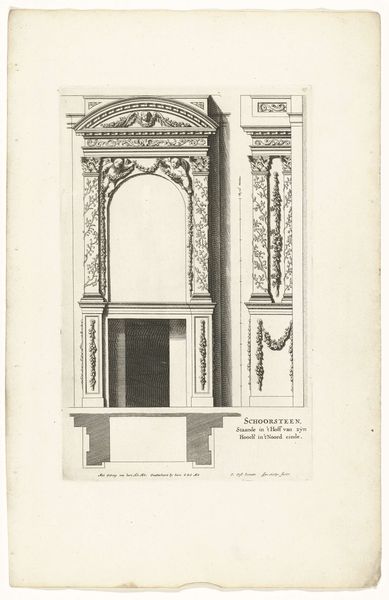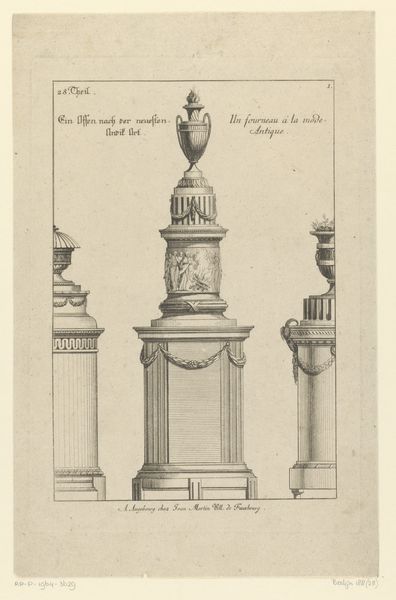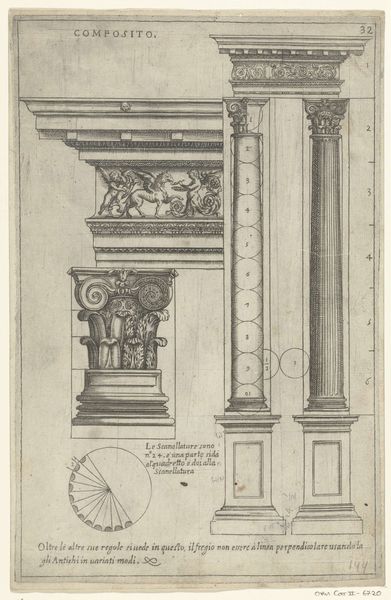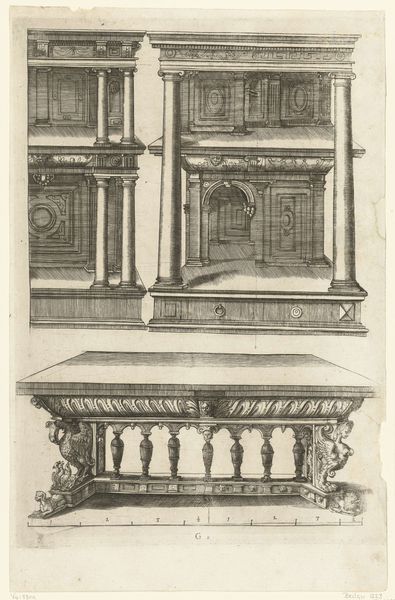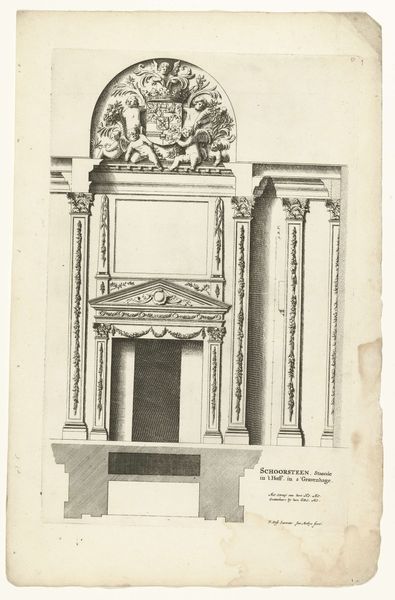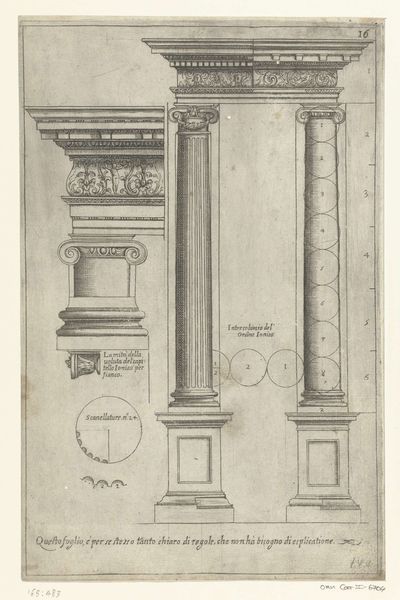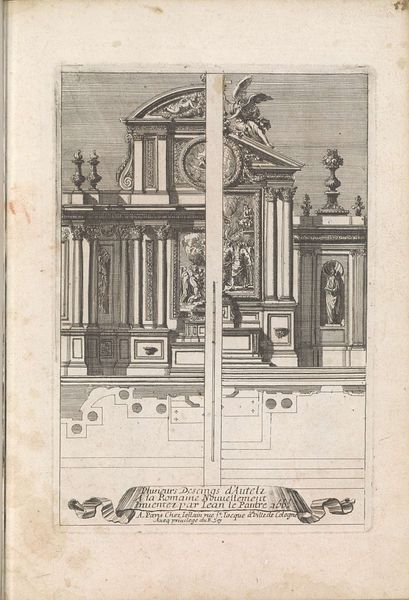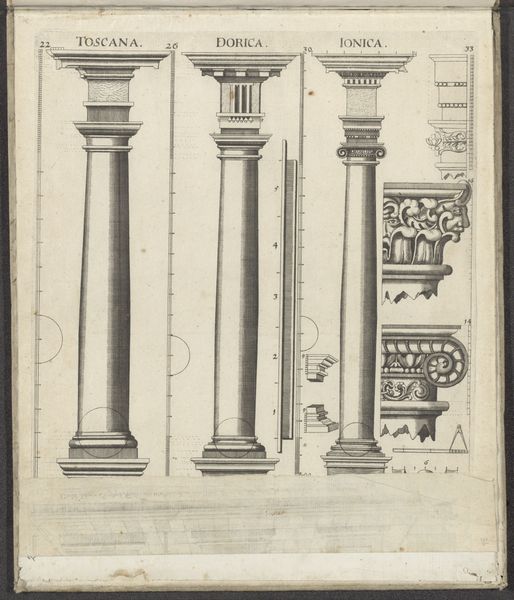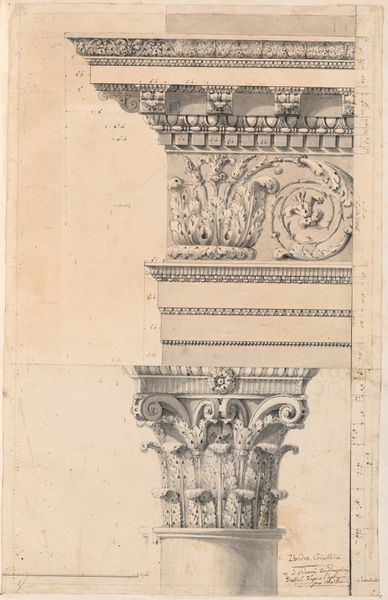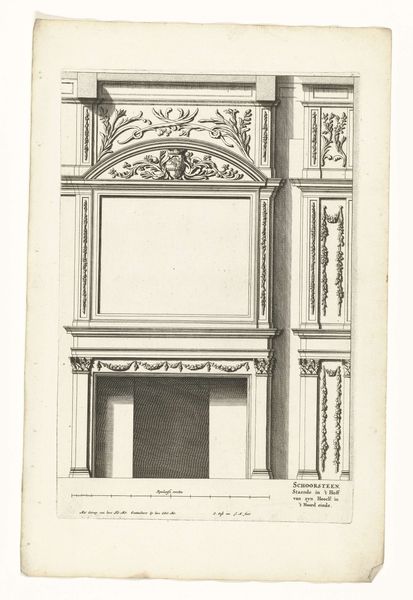
drawing, paper, ink, engraving, architecture
#
drawing
#
etching
#
paper
#
11_renaissance
#
ink
#
geometric
#
classicism
#
line
#
italian-renaissance
#
engraving
#
architecture
Dimensions: height 276 mm, width 215 mm
Copyright: Rijks Museum: Open Domain
Curator: This engraving, rendered in ink on paper, is titled "Vier Dorische zuilen met voetstukken, een doorsnede en twee kapitelen," dating back to around 1610. The artist who made this art piece is Gabriel Kramer. Editor: It’s fascinating! At first glance, there is a certain weightiness, a solidity implied by the careful rendering of these Doric columns and their bases. The contrast between the spare, unadorned columns on the left and the intricately decorated ones on the right also grabs my attention. Curator: Absolutely. Kramer's work here engages directly with the burgeoning architectural trends of the Renaissance. We see a renewed interest in classical forms, but what’s intriguing is how this intersects with broader power dynamics of the time. The Doric order, traditionally associated with strength and simplicity, takes on new layers when we consider its place in representing authority, particularly in the context of the patriarchal structures underpinning Renaissance society. Editor: The precise linework indeed evokes power, but it’s also about the pleasure of line itself – the crispness defining form, the hatching creating shadow. Consider how Kramer utilizes the white space of the paper, not merely as background, but as an active element defining the contours. It allows for an interesting game of figure and ground. Curator: I see that and I cannot agree more about the technique that allows these shapes to define not only power through its forms but social norms of Renaissance and gender. The architectural rendering like this would likely be destined for an elite male patron. Kramer subtly reinforces existing hierarchies through an almost pedagogical depiction of ideal form. Editor: Perhaps. But through this very act of deconstruction – dissecting the column into its components, exploring surface texture, and playing with perspective, the power lies in its understanding through geometry rather than political context. This allows viewers to analyze forms and come to independent conclusions. Curator: But doesn't that very access—that ability to analyze, to "understand"—hinge on specific social and educational privileges that would exclude the broader populace at the time? Editor: Maybe. But that very argument can be mirrored through the architectural feats Kramer documents. Without strong foundations, without line and composition to bring such form into reality. It, too, becomes a weak argument in socio-political structure. Curator: Hmmm, perhaps you are right, it does not necessarily support this argument on its own, as architectural achievements cannot always become inherently good, but they might reinforce problematic cultural narratives nonetheless. Editor: Well, in my view, these carefully etched lines provide clarity—or maybe, a little discordance—that encourages contemplation on our past perceptions.
Comments
No comments
Be the first to comment and join the conversation on the ultimate creative platform.
